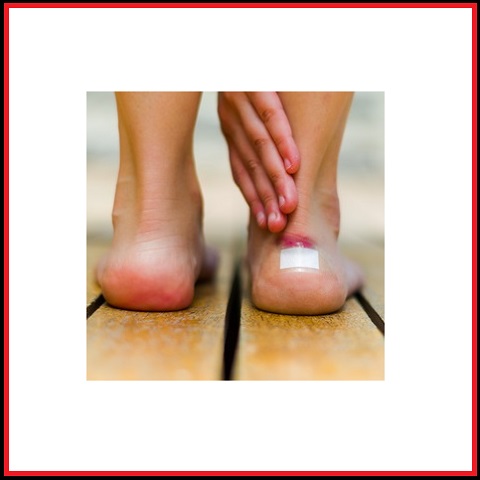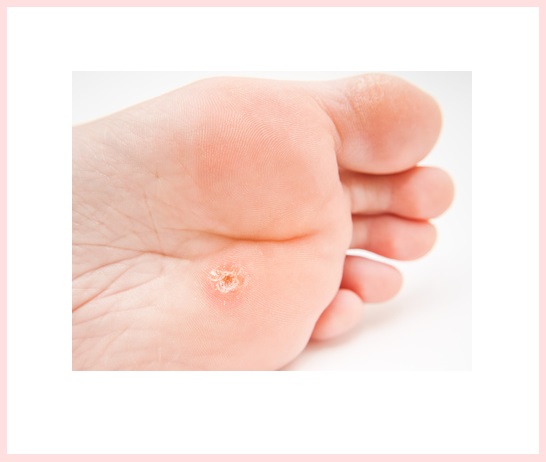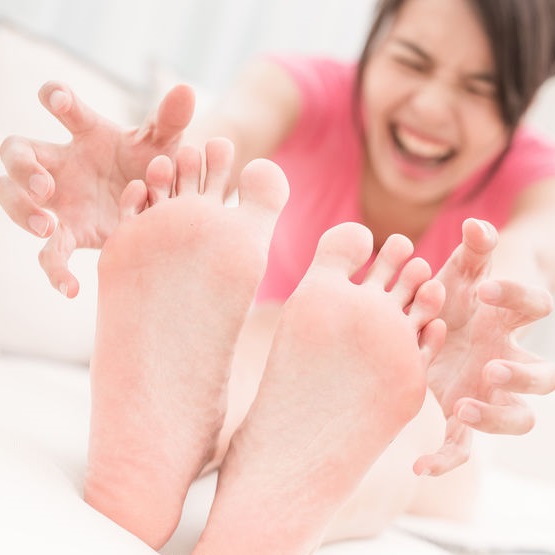What are foot blisters?
The word “blister” is derived from an old french word “blostre” which was used to describe a nodule induced by leprosy. The average blister is far more common than a case of leprosy however. I am happy to give an overview of sites, solutions, and tricks for dealing with pesty blisters.
Blisters are pockets of fluid that swell up and form bubbles in the upper layers of your skin. This happens when the layers of skin split apart and serum fills the space in between. Serum comes from the liquid part of the blood and has many protective antibodies in it.
Why do we get Blisters ?
The formation of a blister is your body’s way of protecting itself. The blister encourages increased healing time and prevents the affected area from taking further damage while it heals. The fact that a blister hurts when you touch it is also another way it helps heal you because you are less likely to keep touching the affected area and causing more irritation. Usually most blisters swell up to look like bubbles on your skin, and are white in color. If a blood vessel underneath your blister bursts and leaks into the serum your blister may even appear red in color. This is known as a blood blister, and is usually slightly more painful than a regular blister.
Is it common to get blisters on your Feet?
Your feet are one of the most common places to find blister. This is because you wear shoes that cause heat and friction when you walk, and these are the main ingredients that cause blisters.

.
Can you get blisters in other ways?
While friction is usually the cause behind most blisters, there are other things that can cause them as well. Exposure to acid or corrosive chemicals can cause blisters, as well as excessive exposure to sunlight. Infectious diseases like chickenpox are known to cause blisters, as well as inherited ones like pompholyx.
Are socks important?
Shoes are most often what cause blisters, and not wearing socks with them is a great way to give you blisters. Also wearing tight fitting shoes that rub your skin while you walk will do the trick. High heels or wrinkles in your socks can cause blisters too, along with moisture on your feet, or deformities in your foot that prevent your foot from conforming to regular shoes.
Am I more likely to get a foot blister?
People most at risk for blisters are those spend long periods of time walking or running, people who wear uncomfortable shoes while participating in weight bearing activities, and those with conditions like neuropathy that affect your ability to feel sensation your feet.
Pick, Pop or Leave my Blister Alone?
If you have a blister on your foot, you will usually want to leave it alone. While it can be tempting to pop it, this can lead to further irritation and even infection, as you are removing the protective fluid and cover, and exposing the nerves in the skin underneath the blister to the open air. It will also be more painful as well. Sometimes however a blister is getting too big and swollen and needs to be popped. This is best done by a health professional. However sometimes, if you are in a remote location it is better to pop it yourself in this situation rather than risk it getting torn off completely. Find the smallest needle you can and poke a tiny hole in the blister, then press the fluid out and either leave it alone or put a bandaid on it. If you do it yourself, you do so at your own risk. Clean hands, clean skin, clean dressing. You don’t want to add infection to your blister problem.
Is there a gold-class of blister sufferers?
Some people have a really bad time with blisters. Professional dancers and elite athletes for example. It isn’t just the high intensity activity that they are involved in. It also relates to their skin profile, sweat gland density, pain tolerance and other factors that we are still investigating. For these people we move to a new level of advice, care and prevention. If you are one of them, please seek professional advice.
What is your last word about Blisters?
If you have blisters, the best way to take care of them is to leave them alone until they heal. If your shoes are the culprit, you may need to get some better fitting ones, or better fitting socks. You might also want to try socks that are specifically designed to keep out excessive moisture, and prevent your feet from getting too sweaty. Putting talcum powder inside your shoes is another method of lessening friction on your feet, but this could end up making your blisters worse if you do it for too long. If you can’t take your shoes off for whatever reason, put a protective layer of padding between the blister and the spot in your shoe that is rubbing on it.Keep your blisters dry and clean, and use a protective dressing on them if they are small enough. This will stop it from breaking before it’s healed. Blisters can be annoying and painful, but when treated properly they tend to heal quickly.
What is your very last word about Blisters?
Prevention !



